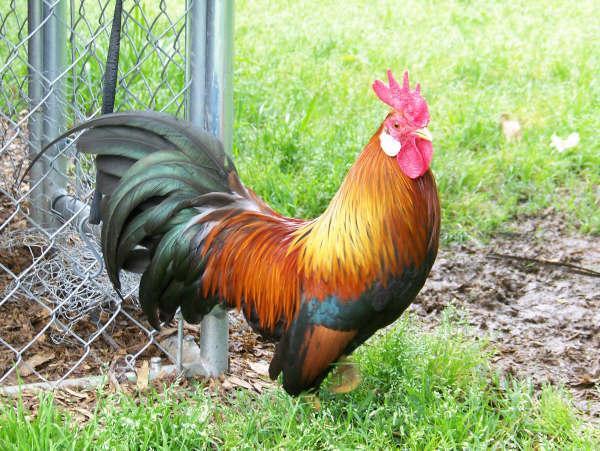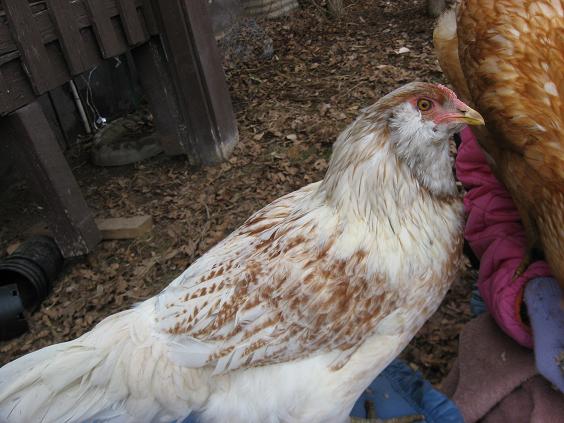Ugh. I read the herpes virus that causes mareks can 'live for several months at room temperarure' and also read 'can live at least 12 months in feather dust'. :/
Navigation
Install the app
How to install the app on iOS
Follow along with the video below to see how to install our site as a web app on your home screen.
Note: This feature may not be available in some browsers.
More options
You are using an out of date browser. It may not display this or other websites correctly.
You should upgrade or use an alternative browser.
You should upgrade or use an alternative browser.
INDIANA BYC'ers HERE!
- Thread starter Chaneys Ranch
- Start date
Ok so I want to deworm the chickens as I'm pretty sure I saw some tape worm segments in a fresh pile while changing waters today after work. I'm wanting to use valbazen but of course can't find any locally. Also 500ml bottle is the smallest I can find for sale. I really don't need all this. So, is there anyone interested in selling any of theirs (I will have to figure out how much I need) or anyone interested in splitting a bottle? I just know the wormer will expire before I'm able to use it all.
We used a tablespoon of dish soap to 4 gallons of water for about 2 weeks to deworm ours last winter. They were not laying at the time so I did not mind it taking a while.Ok so I want to deworm the chickens as I'm pretty sure I saw some tape worm segments in a fresh pile while changing waters today after work. I'm wanting to use valbazen but of course can't find any locally. Also 500ml bottle is the smallest I can find for sale. I really don't need all this. So, is there anyone interested in selling any of theirs (I will have to figure out how much I need) or anyone interested in splitting a bottle? I just know the wormer will expire before I'm able to use it all.
A good rule to look for that works in most cases is this: if the bird has rich color patches in the shoulder area at or younger than about 4 months old, it is usually male, while if it is patterned evenly overall, it is female. This depends on the color and breed, of course. Typically, the color on a pullet is not as vibrant as that of a cockerel, either. Take for example the light brown Leghorn. The rooster has a very vibrant pattern, but it is concentrated to the hackles, shoulders, and saddle area:

The hen, such as my dear Whiri here, has a less vibrant coloration that is spread more uniformly than the rooster:

Some mixes become trickier, especially Easter-eggers. See how the below bird has red in its shoulders? This, however, is a hen. The red is not as rich and is spread out, not concentrated in patches as it would be in a young cockerel.

Now on my young Easter-egger cockerel, Hika Ma, while he was obviously male, he did not get the bright red shoulder patches. However, if you look closely, you can see that he has patches of white in his shoulders instead, presumably because he carries two copies of the silver gene:

You also don't see red shoulders in birds like Barred Plymouth Rocks or Dominiques, but they can be easily sexed visually if they are pure bred because of the differences between the sexes. The hens, carrying only one copy of the barring gene, are darker barred or have thicker black bars than white. The males, carrying two barring genes, are lighter, or have wider white bars than black. However, since mixes between barred or cuckoo breeds and other breeds often result in roosters with one copy of the barring gene, this is not reliable unless you can confirm that the bird is pure bred.

Typically also, unless it is a black bird like an Australorp, a hen will not have a black chest. That is how I was certain that Whiri was a pullet from pretty early on, even though she had a big comb. Her chest was rosy brown, not black like a Light Brown / Partridge cockerel's chest would have been.
There are many other rules, but I feel like nothing can really be said with absolute certainty. In general, however, the above holds true to sexing birds by their appearances. I hope that answers your questions.
(P.S., all of the pictures besides Whiri and Hika Ma were found on Google and are not my birds.)
ETA: This was in response to racinchickens, of course.
Sooo, based on this, I went out and looked at my birds when I got home from work. Does'nt look good. I believe my flock of 7 girls and 2 boys has turned into a flock of 3 girls and 6 boys....my rooster luck lives on. I'll still grow them out to see, but I guess you live and learn. I got 2 of the 'boys' as chicks, and to my eyes they had all the markings to look for to be girls. But I guess if another type of chicken got into the mix, all bets were off.
M2H, let us know how that order with Mulzer goes, I emailed them weeks ago about getting some sand and they never replied. I suspect that they have out-dated contact information posted and that no one ever got the message.
On a lighter note, here are the eggs I got today:

The two large dark ones are Welsummer eggs. The next tinted one I think came from a Dark Brahma. The white egg is from a Silver Leghorn. They are almost the same size, which is funny because the hens that laid them certainly aren't. The Brahma is twice as big. And the last one.....it weighs 11g or .4oz. It is less than half the size of any egg I have ever gotten. If I didn't know better, I'd think a quail or a songbird got into the coop and snuck it in. No idea where that came from.
The two large dark ones are Welsummer eggs. The next tinted one I think came from a Dark Brahma. The white egg is from a Silver Leghorn. They are almost the same size, which is funny because the hens that laid them certainly aren't. The Brahma is twice as big. And the last one.....it weighs 11g or .4oz. It is less than half the size of any egg I have ever gotten. If I didn't know better, I'd think a quail or a songbird got into the coop and snuck it in. No idea where that came from.
On a lighter note, here are the eggs I got today:

The two large dark ones are Welsummer eggs. The next tinted one I think came from a Dark Brahma. The white egg is from a Silver Leghorn. They are almost the same size, which is funny because the hens that laid them certainly aren't. The Brahma is twice as big. And the last one.....it weighs 11g or .4oz. It is less than half the size of any egg I have ever gotten. If I didn't know better, I'd think a quail or a songbird got into the coop and snuck it in. No idea where that came from.
Nice assortment of eggs. And I thought quail layed speckeled eggs
I love how they can vary so much. The littlest egg may be a fart egg.On a lighter note, here are the eggs I got today:The two large dark ones are Welsummer eggs. The next tinted one I think came from a Dark Brahma. The white egg is from a Silver Leghorn. They are almost the same size, which is funny because the hens that laid them certainly aren't. The Brahma is twice as big. And the last one.....it weighs 11g or .4oz. It is less than half the size of any egg I have ever gotten. If I didn't know better, I'd think a quail or a songbird got into the coop and snuck it in. No idea where that came from.
M2H, let us know how that order with Mulzer goes, I emailed them weeks ago about getting some sand and they never replied. I suspect that they have out-dated contact information posted and that no one ever got the message.
Their web page had several broken links but the one for the Evansville office seemed to be fine. They answered right away when I called. I only picked that location because I think it's closest to Julie. I might be wrong though. Their price was very comparable to the quarry nears house too.
Quote: I'm glad you posted that...I was just going to suggest that as well. Shaklee's basic H soap can be used to deworm and it is much easier on the system than the chemical wormers. I had first read about it in Joel Salatin's books. Cattlemen use it quite frequently and I believe it is still approved for use on organic farms too.
Some basic H info: (Note under wetting agent - cutting the protective coating on insects...I believe it is the surfactants that cause that.)
http://lindholm.myshaklee.com/us/en/about_farmranch_basic_h.html
Here is the info from the cattle book on the basic H:
Quote:
Copyright Material quoted for educational purposes only.
Salad Bar Beef by Joel Salatin
Pages 164-166
Copyright 1995 by Joel Salatin




More info on surfactants:
Quote:
New posts New threads Active threads
-
Latest threads
-
-
Hen flips out when being lowered to ground
- Started by porokelle
- Replies: 0
-
Interior walls for chicken retirement home
- Started by Skacha23
- Replies: 3
-
-
-
-
Threads with more replies in the last 15 days
-
-
Open Contest Cutest Couples Photo Contest—Poultry Edition
- Started by Lacy Duckwing
- Replies: 132
-
BYC's 52-week Photography Challenge. Week 2: (Jan 12-18, 2026). Theme: Flock Star
- Started by Lacy Duckwing
- Replies: 95
-
Favorite Chicken Breed?
- Started by urlocalcrazychickenlady
- Replies: 78
-
-
×





